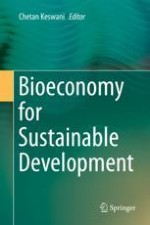2020 | OriginalPaper | Buchkapitel
2. Agri-biotechnology: Legal and Economic Aspects of Using GMOs in EU
verfasst von : Ewa Woźniak, Tomasz Zimny, Tomasz Twardowski
Erschienen in: Bioeconomy for Sustainable Development
Verlag: Springer Singapore
Aktivieren Sie unsere intelligente Suche, um passende Fachinhalte oder Patente zu finden.
Wählen Sie Textabschnitte aus um mit Künstlicher Intelligenz passenden Patente zu finden. powered by
Markieren Sie Textabschnitte, um KI-gestützt weitere passende Inhalte zu finden. powered by
